Criterion Blu-ray review: Polanski’s Macbeth (1971)
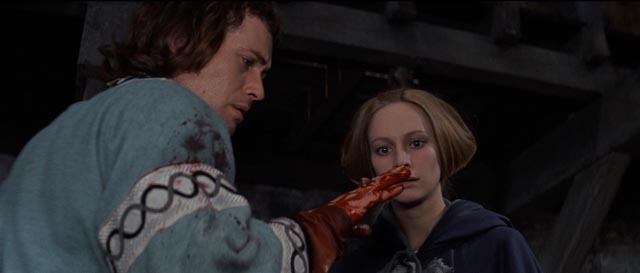
Roman Polanski made The Tragedy of Macbeth, his first feature since his commercial breakthrough with Rosemary’s Baby, the year after his pregnant wife Sharon Tate was murdered by the Manson Family. This fact coloured much of the critical reaction to the film, particularly in the U.S., where the director was cast in a strangely unfavourable light. His association in many people’s minds with witchcraft, black magic and very real violence, resulted in Macbeth (1971) being treated with something like moral censure – almost as if the imaginative world of Polanski’s movies were somehow implicated in the real-life horror of the Manson killings.
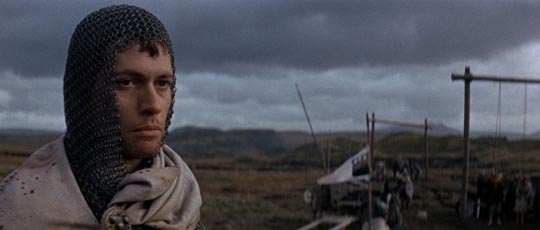
This was compounded by the fact that Macbeth was financed by Hugh Hefner’s Playboy empire, apparently giving it a sordid provenance which inevitably tainted the film. Certainly, there are elements in the film which might seem startling to audiences used to tasteful and respectful presentations of Shakespeare’s plays. But the darkness and violence of Polanski’s film are inherent in the source, and while presented here in a more graphic and visceral way than was previously the case with filmed Shakespeare, one only has to compare Macbeth with the Bob Guccione/Penthouse-financed Caligula to see that salacious exploitation was not the motivation for this production. (The brief instances of nudity are not gratuitous, but emerge naturally from the context.)
While it may well be true that the trauma of the Manson murders played some part in Polanski’s choice of Macbeth as his next project, the film itself betrays no signs of being deformed by them. In fact, this adaptation of Shakespeare’s darkest and most violent play is one of the most successful films in the long history of cinema’s often rocky relationship with the Bard’s works.
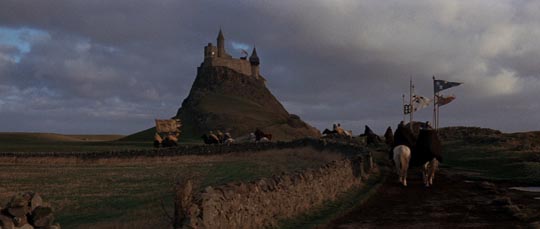
Filmmakers have been drawn to Shakespeare almost since the origins of cinema (IMDb lists over a hundred silent adaptations, beginning with a version of Macbeth in 1898). There seem to be two main reasons for this attraction: first, the Bard was an excellent storyteller with an acute understanding of human behaviour, social relationships and political power, constructing dynamic plots and vivid characters; and second, the plays were written to be performed on an essentially bare stage, with action existing on an almost purely conceptual level, opening up endless possibilities for design and staging – the theatricality of Julie Taymor’s Titus, the equally rich theatricality allied with visual realism of Orson Welles’ Chimes At Midnight, the powerful psychological atmosphere of Laurence Olivier’s Hamlet. Together, these two factors allow for constant re-conceptualizing of the plays; although some film adaptations work better than others, of course, these plays can be relocated temporally and geographically, keeping them perpetually relevant for audiences.
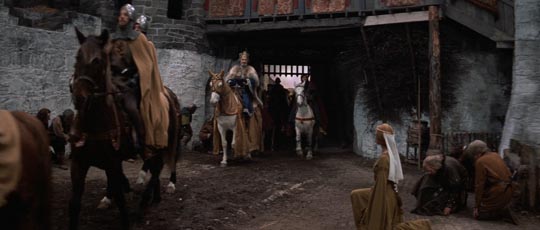
One of the biggest challenges for the filmmaker adapting Shakespeare lies in finding a balance between language intended to evoke the play’s world on a bare stage and the primacy of the visual in film. These words, this language, contain potential pitfalls for the filmmaker; left intact, the text can work against the strengths of cinema, creating conflict between the verbal imagery and the photographic reality. This is why many of the best film adaptations of the plays veer away from a slavish adherence to the text, replacing some of the poetry with visual equivalents (Derek Jarman’s playful and inventive Tempest and Peter Greenaway’s equally idiosyncratic version of the same play, Prospero’s Books, for example). In recent years, directors have frequently opted for modern-dress versions (Ralph Fiennes’ Coriolanus, Richard Loncraine’s Richard III, Joss Whedon’s Much Ado About Nothing, Baz Luhrman’s Romeo+Juliet), pushing the idea of contemporary relevance; but others, like Welles, root the plays either in the time of their writing, or in the period appropriate to the story.
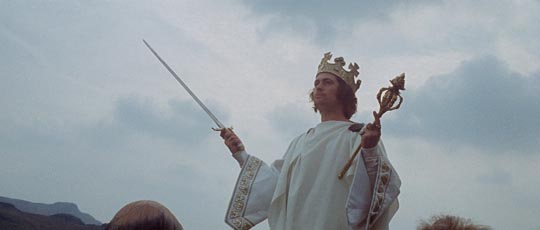
Roman Polanski, working from a script he wrote in collaboration with Kenneth Tynan, opted for the latter choice. Set in medieval Scotland, shot on bleak rain-soaked locations, The Tragedy of Macbeth strives for, and largely achieves, realism in its design and staging. But more remarkably, it also finds a way to convey psychological realism while staying largely true to the poetic text. Polanski has the rare ability to draw from his actors a naturalistic style of speaking the verse which not only makes the language entirely accessible to the viewer, but actually manages to make it sound like ordinary speech. Crucial to this is his choice of actors, all of whom inhabit their roles with a complete lack of grandiose theatricality. At the time of the film’s release, it was remarked – not necessarily favourably – that the murderous couple were much younger than usual, yet Jon Finch and Francesca Annis are actually age-appropriate for the roles of a rising young warrior and his lady. But as actors they are also more mature and technically skilled than, say, Leonard Whiting and Olivia Hussey in Zeffirelli’s Romeo and Juliet, made a few years earlier.
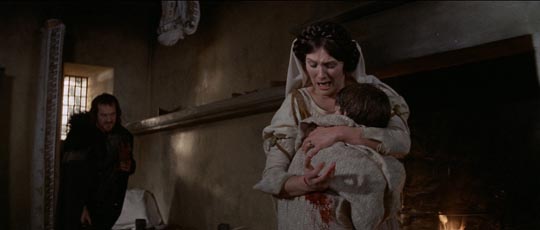
Beyond the excellent cast, Macbeth (designed by Wilfred Shingleton and photographed by Gil Taylor) aims for a realism of design and staging, convincingly set in a dank medieval world where life is brutal and short. This is a world of mud and blood in which order is maintained or destroyed through endless applications of violence. All social relations seem to hinge on expressions of force. The story opens in the aftermath of a battle in which Macbeth has fought well for King Duncan against invaders who threatened the kingdom from outside; and yet despite fighting so hard and loyally, Macbeth is easily swayed to treason by the cryptic prophecy of the three witches he encounters on the moor.
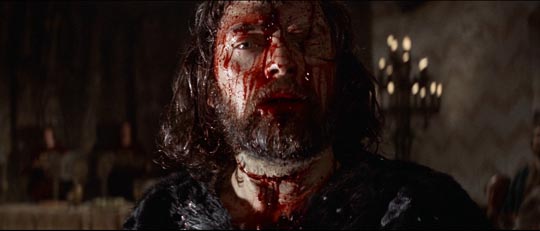
Macbeth is a play about fate and free will, its themes tying in with much of Polanski’s other work, in which characters find themselves fighting against or succumbing to forces outside themselves – Rosemary’s Baby, The Tenant, Chinatown, even The Pianist. There is nothing in the witches’ prophecy which dictates Macbeth’s actions, and in fact there are quite apparent warnings in their words against taking the actions he eventually does take. They predict his promotion, but although they tell him that he will be king, there will be no dynasty – in fact, his companion Banquo is the one who will sire a line of kings. Macbeth’s ambition (spurred on by his seductive, ambitious wife) blinds him to the warning that his rise will be a dead end and he self-destructively ruptures the social order in which he has established a secure place for himself. Every act which follows his decision to kill the king and seize the throne leads to greater and greater instability and the undermining of the power he craves. Here Polanski’s dark view of human nature meshes perfectly with Shakespeare’s vision of human weakness; the core of the play is the characters’ inability to resist their own darker instincts and desires (a point reinforced by the brief coda, not in the original play, in which Duncan’s younger son Donalbain rides out to seek the witches for himself). At any point Macbeth could choose to take a different course, but he finds himself compelled to act out the prophecy even though it leads to his own destruction.
Visually, Macbeth has both an intimacy and a sense of scale, opening the play up across those bleak landscapes while maintaining a close attention to the characters. This is a cold and hostile world; even sunlit days seem cold and dark. The 4K transfer from the original negative on Criterion’s new Blu-ray release captures the film’s nuances of design and texture, with a strong film look reflecting the natural grain of the source. The restored soundtrack presents dialogue, atmospheres and music (almost an atmospheric effect itself by The Third Ear Band) with clarity.
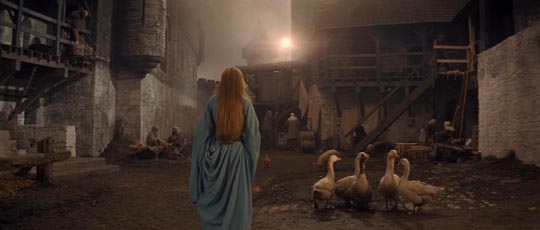
Although there is no commentary track on the Blu-ray, there are substantial extras, beginning with Toil and Trouble: Making “Macbeth” (1:00:29), a retrospective interview-based documentary in which Polanski, producer Andrew Braunsberg, assistant producer Victor Lownes, Francesca Annis and Martin Shaw (Banquo) present a detailed account of the production. Polanski Meets Macbeth (47:31) is a behind-the-scenes documentary from 1971 which gives a good sense of what was involved in the production with its budgetary and scheduling limitations; the weather was appalling and wrangling armies of extras in those pre-video-assist, pre-CGI days looks like extremely hard work. There’s a brief excerpt from the Dick Cavett show in which Kenneth Tynan speaks about the production (13:33) and Aquarius: “Two Macbeths” (30:03) is a British talk show in which Polanski is treated somewhat condescendingly by the host and theatre director Peter Coe, both of whom look down on the idea of filmed Shakespeare. There are also a couple of trailers (3:40) and an insert essay by critic Terrence Rafferty.
Comments
I agree with your analysis whole-heartedly.
Teaching ‘Macbeth’ off and on for 30 years, likely I’ve viewed this film more than any other.
The first years I showed it in school (always for grade 11’s) it was controversial. I made a point of warning students about the violence, saying they could walk out at any time (aren’t the beginning scenes great).
Of course only a few students left, but some did. A far cry from 20 or so years later, when I no longer gave much or any warning, and students almost found the violence humdrum. But the film is not dated.
I’m not surprised that kids in more recent years would find Macbeth “mild” when they’ve got used to increasingly graphic gore in their entertainment. Still, I’d hope that seeing something like Macbeth might give them a moment’s thought about what violence really means. Violence and death in Polanski’s film is brutish and painful (that striking opening moment on the beach with a wounded man being beaten to death; the slaughter of Macduff’s family; the murder of Banquo) rather than just a fun diversion. Perhaps setting these kinds of images in a more serious context might counter the general tendency towards desensitization.
By the way, what was the response of parents and school administrators to your showing the film to the kids?
Another big change:
My ’70’s viewings cost about $75 each time to rent the 3 reels or so. Later I bought my VHS copy for likely less than $10. I suppose I could get the Blu-ray now for even less.
However, packing several classes into the theatre to see the expensive film one a biggish screen was more dynamic than a 24″ classroom TV.
Another favorite classroom film – Mel Gibson’s ‘Hamlet’…yes, Mel Gibson.
The greatest Shakespeare film, at least for teaching, is Kenneth Brennan’s ‘Hamlet’. It’s too true to the text to be a commercial success (about 25% of ‘Hamlet’ should be cut forever). But the are many moments of perfection, such as Kate Winslet’s face squashed against glass. And there’s unintentional comic relief with the pitiful miscasting of an aged Jack Lemmon.
Brennan makes the old greats, even Welles and Olivier, seem hammy and outdated. But, as you point out, not Polanski’s ‘Hamlet”.
I actually quite liked Gibson’s Hamlet … and the one time I saw Branagh’s Hamlet was the only time I ever understood why Ophelia goes mad; somehow that always seemed a bit arbitrary in the other versions I’d seen.